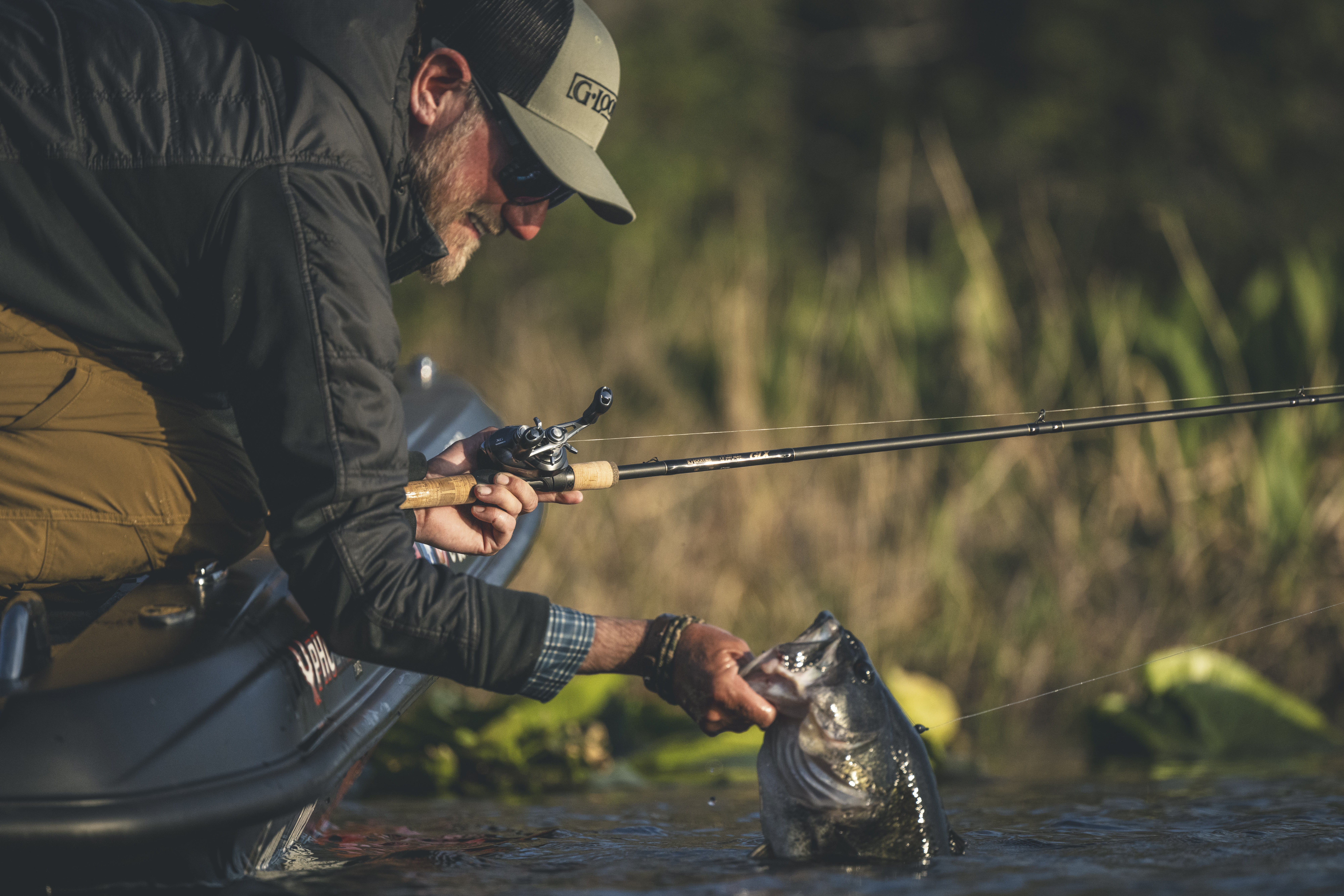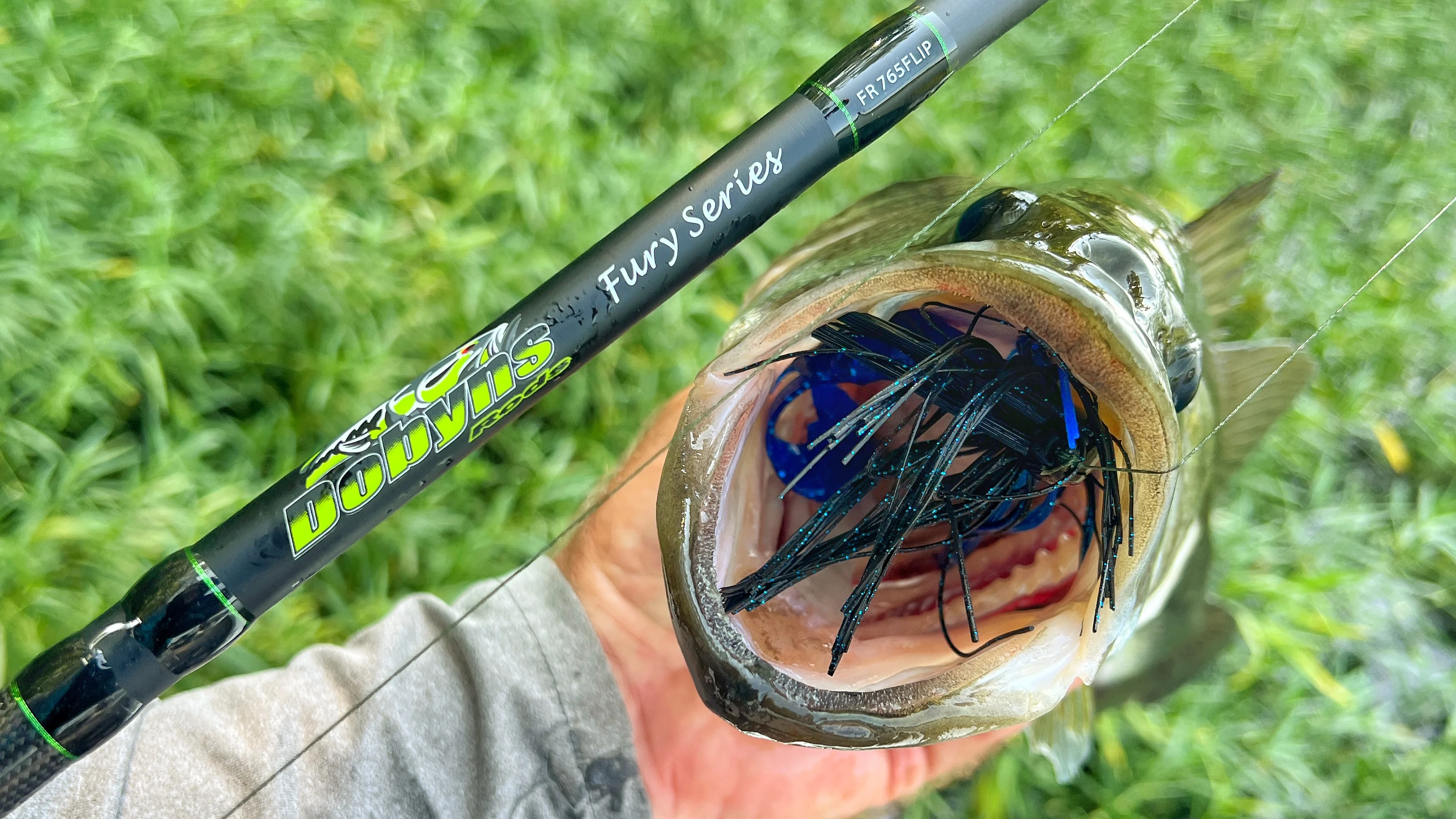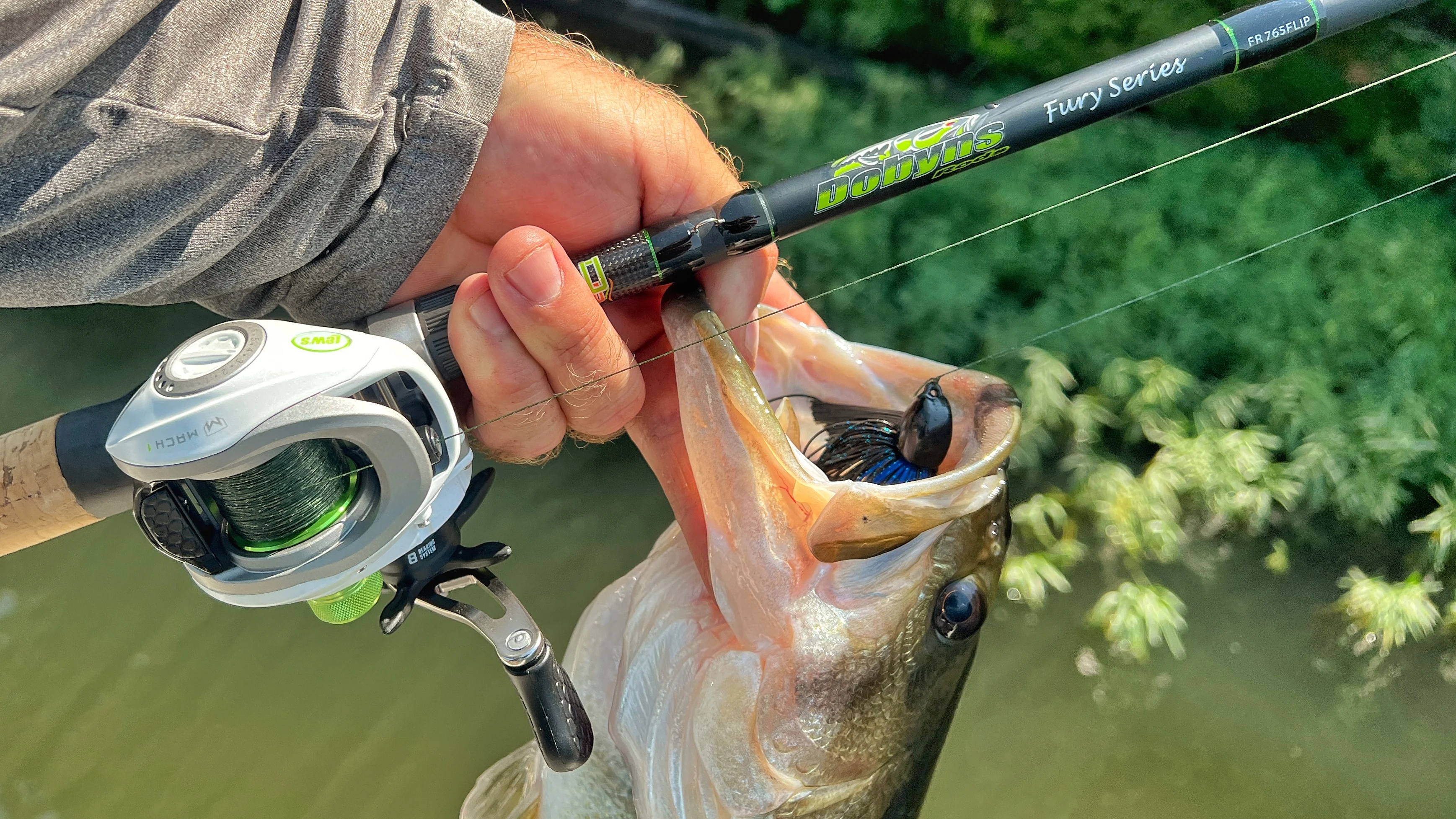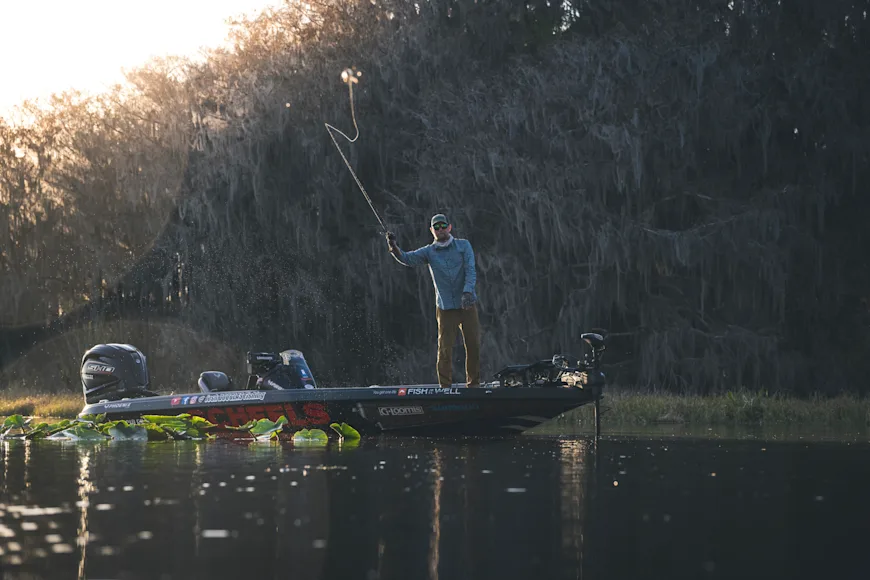Forward-facing sonar has opened our eyes to how many big bass suspend in open water. And while there's no doubt that those fish are fun to target and catch, there are still plenty of giants that bury up in thick cover where a fancy screen can't tell you when to cast. That's why mastering how to flip a jig is still just as important as ever.
Thick grass beds, hydrilla mats, reed clumps, and lily pads are difficult areas to get a bait in front of fish. Flipping and pitching a 3/4-ounce (or bigger) jig along the edges and into the middle of this vegetation allows you to effectively present a beefy bait to laid-up bass. All it takes is the right gear, the ability to read water, and a few techniques to get the bait in front of fish. Here is a basic guide to flipping a jig in thick vegetation for big bass.

When to Flip a Big Jig in Vegetation
Though there are a number of bass that stay shallow year-round (excluding northern fisheries in the winter), the best time to flip jigs in thick cover is May through October. Simply because this is when shallow vegetation like lily pads, water willow, and coontail max out across most of the country. And while spring is an excellent time to fish shallow when bass are feeding heavily to prepare for the spawn, we often use different techniques during that time. Heavy jigs are most effective during late spring through early fall when dense patches, vast fields, and hard edges perfectly position bass for a jig bite.
What to Look For
You can fish a big flipping jig in almost any type of aquatic vegetation. This can make finding fish a difficult task when there’s a lot of vegetation present, like late in the summer months. The key to reading all this water quickly is to look for irregularities, hard edges, and isolated patches.
For instance, if you pull up to a ledge on the Tennessee River, and there’s a mat of topped-out hydrilla that stretches on for a long distance, you want to focus little points along the hard edge of the grass where the bottom contour rolls off into the river channel and the hydrilla is submerged. Targeting these little points along the edge or even focusing on the 100 to 200 yards of grass on the upriver and downriver ends of the mat will give you a better chance at finding fish.
The same holds true when flipping a jig down in Florida in the winter. Look for irregularities like isolated clumps and seams in the vegetation. This can be a reed line that has floating debris mixed in with it, a clump of vegetation out in the middle of a hydrilla field, or a hyacinth mat that’s blown into a lily pad patch. These are all great examples of areas that will likely hold fish.

How to Flip a Jig in Thick Vegetation
When it comes to fishing a jig in heavy vegetation, you want to position yourself fairly close to the cover and make short, precise flips and pitches with the bait. Again, look for the irregularities when selecting where each pitch will go. And don’t be afraid to flip your bait right over and into the thick of it.
When the bait hits the water, allow the jig to fall on a semi-slack line. This gives the bait a natural look, but also allows you to detect a bite on the fall far better than if you just dropped your rod tip and let the bait free fall to the bottom. Bass will often bite the bait on the way down, and keeping the line somewhat taut on the fall will help prevent snagging your jig on cover.
When you get a bite, you want a swift and clean hookset. Don't “drop and pop” the fish like you would with a football jig from the bank. That type of hookset can result in the bass spitting the jig before you can set the hook. Or, the fish may get a head start and bury you in vegetation. Giving the fish a swift, sweeping, and powerful hookset will punch the hook through the fish’s mouth and get it headed in the right direction and out of the cover before it has time to react.

Gear
Flipping jigs in heavy cover requires specific gear: A strong and long rod, a beefy reel, braided line, and a meaty jig with a bold hook. The Dobyns Fury 7’6” flipping/punching rod is perfect for this technique. Fitzgerald Fishing’s 7’8” Big Jig/Heavy Mat Flipping rod is another great option. Read our Best Jigging Rods of 2024 for more selections.
Recently, I’ve been tinkering around with one of the new-age shallow spool reels specifically designed to hold only enough line for pitching and flipping. The MACH I SS Gen 3 Casting Reel has served me well in this regard. But the Lew’s Super Duty has been a long favorite of mine for heavy braid and big baits. No matter what you choose, a fast gear ratio (7:1 or higher) works best because it allows you to take line in quickly between pitches.
As for the line, braid is the only way to go. Fish 50-pound test at minimum, stepping up to 65-pound test if you’re targeting really big fish around super thick cover—like 7-pounders around reeds. Otherwise, the 50-pound test braid will do nicely. Sufix 832 is my go-to braided line.
When it comes to the actual jig, you want something heavy with a great weed guard and a bold hook. The Medlock Jig is the gold standard for this type of fishing. Using two weed guards allows for maximum hangup prevention. It also provides an opening for the hook to penetrate a fish's mouth without the hook having to push through one large, thick weed guard. The Gambler Double Weedguard Flipping Jig is also a good option.
The tricky part is choosing a jig that is light enough for a natural presentation but heavy enough to punch through the cover at the same time. A good starting point is ¾-ounce, stepping up to an ounce in thicker cover. If you need something heavier than 1 ounce to get through the cover, you’re probably better off swapping for a punching setup. A large craw trailer finishes off the jig package nicely, and the Strike King Rage Tail Craw is my favorite.
Final Thoughts
Flipping jigs in chocked-out vegetation is a nuanced style of fishing that requires technique-specific gear. Make sure you have the right rod, reel, line, and bait or you won't land many fish. ALook for irregularities when dissecting vast amounts of cover. As you start getting bites around certain types, combinations, or compositions of vegetation, you’ll be able to put together a pattern.


